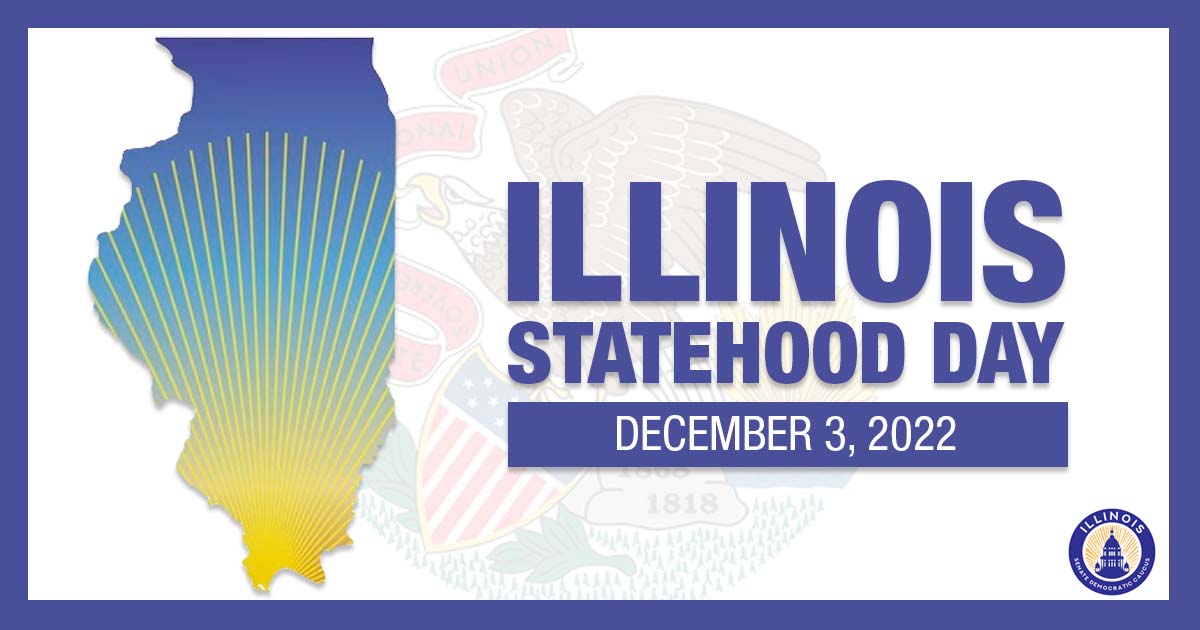Celebrate the holidays with lights, laughter and levity
- Details
 Chestnuts roasting over an open fire, Jack Frost nipping at your nose and Christmas lights! Nothing quite embodies the holiday season like driving home when the sun has set and seeing houses bursting with Christmas lights and decorations. This season, neighborhoods are not the only places lit up with the holiday spirit. Multiple locations and festivals create wonderful light shows all over Illinois during December and January. Embrace the holiday season and make memories with loved ones by visiting these colorful and bright light shows. Here are some of the best Christmas light displays to visit in the state:
Chestnuts roasting over an open fire, Jack Frost nipping at your nose and Christmas lights! Nothing quite embodies the holiday season like driving home when the sun has set and seeing houses bursting with Christmas lights and decorations. This season, neighborhoods are not the only places lit up with the holiday spirit. Multiple locations and festivals create wonderful light shows all over Illinois during December and January. Embrace the holiday season and make memories with loved ones by visiting these colorful and bright light shows. Here are some of the best Christmas light displays to visit in the state:
- Pathway of Lights – At Aikman Wildlife Adventure, Arcola, each Sat. from Nov. 12 – Dec. 17
- Holiday Glow – In Allerton Park, Monticello, Dec. 2 – 23, Dec. 27 – 30, Jan. 6 – 7, Jan. 13 – 14
- Light Up the Park – In Chatham Community Park, Chatham, Nov. 25 – Dec. 25
- Wonderland in Lights – In Effingham Community Park, Effingham, Nov. 24 – Jan. 1
- The Festival of Lights – In Forest Park, Shelbyville, Nov. 18 – Jan. 1
- Candlestick Lane – At Grant Place & Eastern Lane, Urbana, Dec. 10 - Dec. 31
- Christmas in the Park – In Manner’s Park, Taylorville, Dec. 9 – 25
- Lightworks – In Peterson Park, Mattoon, Nov. 18 – Dec. 26
- Christmas Wonderland – In Rock Spring Park, Alton, Nov. 30 – Dec. 27
- Festival of Lights Winter Wonderland – In Veterans Park, East Peoria, Nov. 24 – Jan. 2
- Holiday Festival of Lights – In Aurora, Nov. 25 – Dec. 25
- Christmas Around the World & Holidays of Light – At the Museum of Science & Industry in Chicago, Nov. 30 – Jan. 8
- Illumination – At the Morton Arboretum, Lisle, Nov. 19 – Jan. 7
- Lincoln Park ZooLights – In Lincoln Park, Chicago, Nov. 19 – Jan. 1
- Brookfield Zoo's Holiday Magic – In Brookfield, Dec. 1 – 4, Dec. 14 – 18 and Dec. 26 – 31
- CTA Holiday Train – In Chicago. Follow the train to see if you can catch a ride!
Happy Birthday Illinois! Illinois became a state on Dec. 3, 1818
- Details
 Let’s blow out the candles and wish a happy birthday to Illinois! Illinois turns 204 on Dec. 3, after becoming the 21st official state of America in 1818. Illinois is a unique state with a robust history. Containing both farmlands and major cities, Illinois is a staple of the Midwest where one can find breathtaking hiking trails or go to the top of a tall skyscraper. Illinois holds many wonders and those who live in the state or those who visit can find something amazing anywhere they go, from Lake Shore Drive in Chicago to Route 66 in Springfield.
Let’s blow out the candles and wish a happy birthday to Illinois! Illinois turns 204 on Dec. 3, after becoming the 21st official state of America in 1818. Illinois is a unique state with a robust history. Containing both farmlands and major cities, Illinois is a staple of the Midwest where one can find breathtaking hiking trails or go to the top of a tall skyscraper. Illinois holds many wonders and those who live in the state or those who visit can find something amazing anywhere they go, from Lake Shore Drive in Chicago to Route 66 in Springfield.
Before Illinois became a state it was inhabited for generations by the Illinois nation, a confederation of Algonquian-speaking Native American tribes. The first Europeans to visit Illinois were French explorers Louis Jolliet and Jacques Marquette in 1673. Illinois became a part of Britain after the French and Indian War. However, after the American Revolution, Illinois became a territory of the United States and achieved statehood in 1818.
At first, settlers were unsure what to make of the flat, treeless prairie lands. Settlers initially believed the lack of trees meant the land would be difficult for farming. This lack of enthusiasm led the state to have a small population when it first came into statehood, only having a population of about 35,000. Soon enough, however, farmers took their plows to the soil and found it to be far richer than expected. Sturdier plows were developed for Illinois soil, and soon the population boomed. Chicago rapidly became a bustling city and Illinois became increasingly recognized as one of the nation’s most fertile agricultural areas. The combination of agriculture and city life sets Illinois apart from other states and today we celebrate the state’s birthday for becoming a part of America’s great union!
Notable Birthdays: Distinguished Illinois figures born in November
- Details
 November is drawing to a close. Before turning our heads toward jingle bells, let’s take a moment to look back at this month while our minds are still on turkey and pumpkin pie. Many birthdays of note from those born in Illinois occurred in November. History starts the moment we are born. The famous, historic, or otherwise distinguished figures who can track their birthplaces back to Illinois in November are as follows:
November is drawing to a close. Before turning our heads toward jingle bells, let’s take a moment to look back at this month while our minds are still on turkey and pumpkin pie. Many birthdays of note from those born in Illinois occurred in November. History starts the moment we are born. The famous, historic, or otherwise distinguished figures who can track their birthplaces back to Illinois in November are as follows:
- Maria Shriver: Former First Lady of California, wife of Arnold Schwarzenegger and American journalist and author, born on Nov. 6, 1955 in Chicago
- Kiernan Shipka: Actress best known for her role as Sabrina on the Chilling Adventures of Sabrina, born on Nov. 10, 1999 in Chicago
- Jimmy Garoppolo: American football quarterback for the San Francisco 49ers, born on Nov. 2, 1991 in Arlington Heights
- Aaron Swatrz: Computer programmer and internet-protégé and activist, in 1999 at age 12 he created the encyclopedia website The Info Network, born on Nov. 8, 1986 in Chicago
- Terrence Malick: Screenwriter and film director, nominated for the Academy Award Best Director for the movie The Thin Red Line, born on Nov. 30, 1943 in Ottawa
- Nelson Ellis: Actor and playwright best known for his role as Lafayette Reynolds in the television show True Blood, born on Nov. 30, 1977 in Harvey
Did you know? Chicago had its own Spiderman
- Details
 Chicago has had its very own Spiderman! While he did not swing from web to web like the comic book crusader, Spider Dan still did whatever a spider can during his two big climbs in the windy city. On Memorial Day of 1981, Dan Goodwin, also known as Spider Dan, climbed all 110 stories of the Sears Tower. The daredevil completed the death defying stunt not only in opposition to great winds, but also against firefighter interference.
Chicago has had its very own Spiderman! While he did not swing from web to web like the comic book crusader, Spider Dan still did whatever a spider can during his two big climbs in the windy city. On Memorial Day of 1981, Dan Goodwin, also known as Spider Dan, climbed all 110 stories of the Sears Tower. The daredevil completed the death defying stunt not only in opposition to great winds, but also against firefighter interference.
Spider Dan did not complete the climb for his own personal glory and recognition. Rather, the rock climber completed the stunt to showcase the difficulty to escape a skyscraper from the highest floors in case of emergencies. He was inspired after witnessing a fire in the MGM Grand Hotel where 85 people had been killed by the blaze due to smoke inhalation on the highest floors where guests could not escape. Dan wanted to prove that despite the efforts firefighters put forward, the tallest levels of some buildings could not be reached by design in case of emergencies. Spider Dan’s point came across as, while firefighters tried to stop his ascent to the top, he still completed the 110 story climb on his own. The climb also proved the difficulty of escaping high floors as he completed it with a lot of effort and risk, even using climbing equipment.
Spider Dan was not done there, however. In the same year he also scaled the 100 stories of the John Hancock Building. Again the fire department desperately tried to stop his ascent. Spider Dan, similar to Spiderman in the comic books, faced backlash from the city’s officials. Finally, impressed by his prowess and in a moment of grace, Mayor Byrne of Chicago at the time called off the fire department. Spider Dan completed two harrowing climbs on Chicago skyscrapers in the same year, showing city dwellers anything is possible if you put your mind to it.



